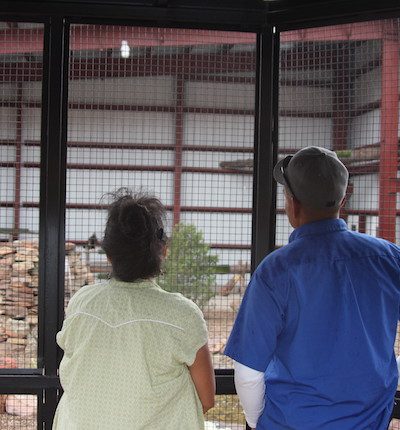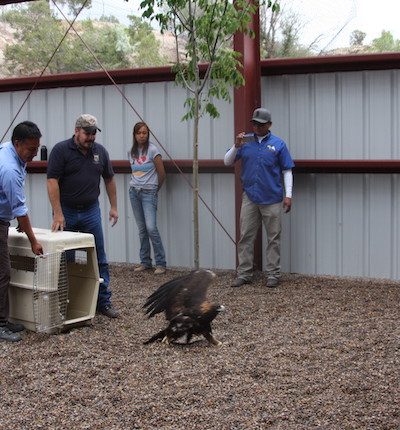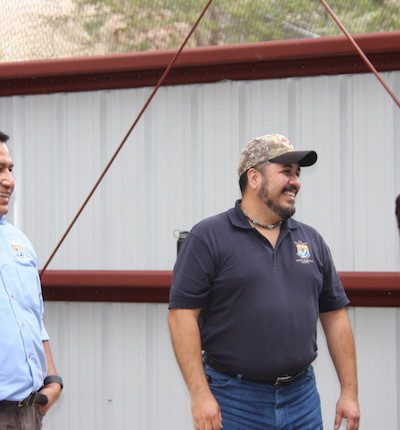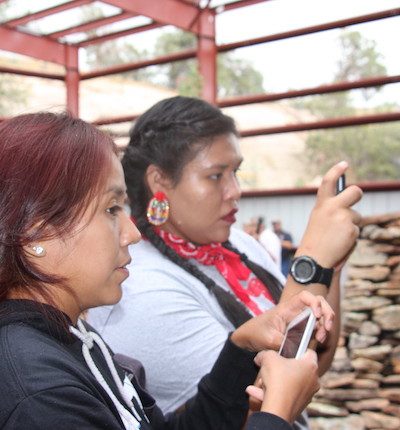
A golden eagle’s wingspan can be wider than seven feet. (Photo by Tom Koerner, USFWS)
The Navajo people know it as Atsá: the golden eagle. They revere the regal bird, moved by its beauty on the perch and its grace as it soars in the Southwestern sky. The golden eagle represents eternal life; it’s fearless, they believe, and it can see where no mortal man can see. The animal’s spirit is a healer of the human spirit, thus the Native people use its naturally molted feathers and parts to cure illnesses and keep evil at bay in ceremonies. In short, the golden eagle is a protector of the Navajo.
The golden eagle is also protected under Federal law. This majestic raptor is protected under the Migratory Bird Treaty Act of 1918 and the Bald and Golden Eagle Protection Act. But through regulations and permitting via the U.S. Fish and Wildlife Service’s Division of Migratory Birds, Native people have access to these culturally significant animals for use in indigenous religious ceremonies and customs.
- Citizens of the Navajo Nation admire the new aviary.
- USFWS employees Michael Eldon Brown, left, and Joe Early release a golden eagle at Navajo Zoo.
- USFWS employees Michael Eldon Brown, left, and Joe Early smile widely after the golden eagle’s release.
- Ancient customs and modern technology are juxtaposed in the lives of these Navajo youth.
Toward that end, the Navajo Nation dedicated its Eagle Aviary and Education Center at Navajo Zoo in Window Rock, Arizona, on July 1, 2016. The dedication involved heartfelt songs and passionate speeches from Navajo dignitaries and zoo employees befitting the event.
The highlight was no doubt the introduction of four golden eagles, previously injured and non-releasable into the wild, into the new aviary as a large and silent crowd looked on. Two USFWS employees, Michael Eldon Brown, Migratory Bird Permits Branch Chief, and Joe Early, the Southwest Region’s Native American Liaison, were together given the honor of releasing one of the eagles. Both are Native American themselves, and were professionally involved in seeing the aviary through the permitting process.
“I appreciate the collaboration of Native people to support the conservation of birds of prey that are culturally significant to Tribes and that are a Trust Responsibility of the U.S. Fish and Wildlife Service,” said Dr. Benjamin Tuggle, Regional Director of the Southwest Region.
The new eagle aviary at Navajo Zoo is the sixth and largest eagle aviary in the United States, all of which are located in the Southwest Region.
Craig Springer, External Affairs, U.S. Fish and Wildlife Service—Southwest Region




